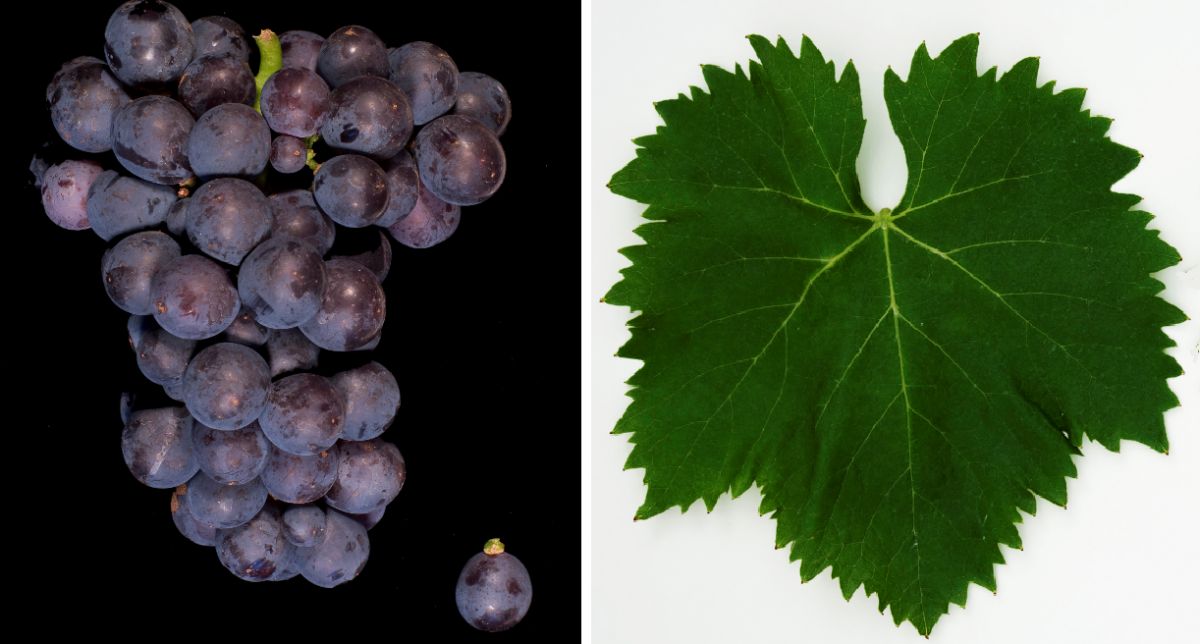The red grape variety originates from Italy. Synonyms are Albana Nera, Aleatico di Spagna, Brunellone, Canaiolo Romano, Ciliegino, Ciliegiolo di Spagna, Ciliegiolo Nero, Ciliegiona Nera, Ciliegioulo Nero, Ciliegiulo, Ciliegiuolo, Ciligiolo Nero, Criminese, Mazzèse, Riminese, Riminese ad Uva Rossa, Riminese di Color di Potercole, Riminese Noire, Sangiovese Polveroso and Sangiovese Polveroso Bonechi. The variety was first mentioned in Tuscany towards the end of the 16th century by the Italian agronomist Giovanni Soderini (1526-1596) as Ciriegiuolo Dolce. This (and so far unproven relations to Spanish varieties) also refutes the hypothesis that the variety was introduced from Spain by Santiago de Compostela pilgrims around 1870. According to another hypothesis, it was already selected from wild vines by the Etruscans.

It should not be confused with the varieties Aglianico, Aglianicone, Aleatico, Doux d'Henry, Mazzese or Sangiovese, despite seemingly suggestive synonyms or morphological similarities. According to DNA analyses carried out in 2013, the variety originates from a presumably natural cross between Muscat Rouge de Madère x Sangiovese (according to other DNA analyses, however, Sangiovese is possibly not a parent but a descendant). The early to medium ripening vine is susceptible to Botrytis, as well as moderately susceptible to both types of mildew and grape rot. The name (Ciliegia = cherry, Ciliegiolo = small cherry) derives from the cherry-like taste and colour. It produces full-bodied, spicy red wines with aromas of cherries and strawberries. It is mostly used as a blend, but is also vinified as a single variety.
The variety is mainly grown in Tuscany, but is also widespread in the regions of Abruzzo, Aosta Valley, Apulia, Basilicata, Emilia-Romagna, Campania, Liguria, Molise, Sicily and Umbria. It is permitted in the DOCG red wines Chianti, Chianti-Classico and Torgiano Rosso Riserva, as well as many DOC red wines such as Amelia, Colli Maceratesi, Golfo del Tigullio-Portofino, Montecarlo, Rosso Orvietano and Valdarno di Sopra. In 2016, only 897 hectares of vineyards were designated, with an extremely downward trend; in 2000, there were 2,527 hectares (Kym Anderson).
Source: Wine Grapes / J. Robinson, J. Harding, J. Vouillamoz / Penguin Books Ltd. 2012
Images: Ursula Brühl, Doris Schneider, Julius Kühn-Institut (JKI)
Voices of our members

There is a vast number of sources on the web where one can acquire knowledge about wine. But none has the scope, timeliness and accuracy of the information in the encyclopaedia at wein.plus. I use it regularly and rely on it.
Sigi Hiss
freier Autor und Weinberater (Fine, Vinum u.a.), Bad Krozingen